Abstract
Because the origin of cobalamin (vitamin B12) analogues in animal chows and animal and human blood and tissues is unknown, we investigated the possibility that multivitamin interactions might convert cobalamin to cobalamin analogues. We homogenized three popular multivitamin-mineral pills in water, incubated them at 37 degrees C for 2 h, and isolated the cobalamin. Using paper chromatography we observed that 20-90% of the cobalamin was present as cobalamin analogues. Studies using CN-[57Co]cobalamin showed that these analogues were formed due to the concerted action of vitamin C, thiamine, and copper on CN-cobalamin. These cobalamin analogues are absorbed from the gastrointestinal tract of mice and either fail to stimulate or actually inhibit cobalamin-dependent enzymes when injected parenterally. We conclude that CN-cobalamin can be converted to potentially harmful cobalamin analogues by multivitamin-mineral interactions and that these interactions may be responsible for the presence of cobalamin analogues in animal chows and animal and human blood and tissues.
Full text
PDF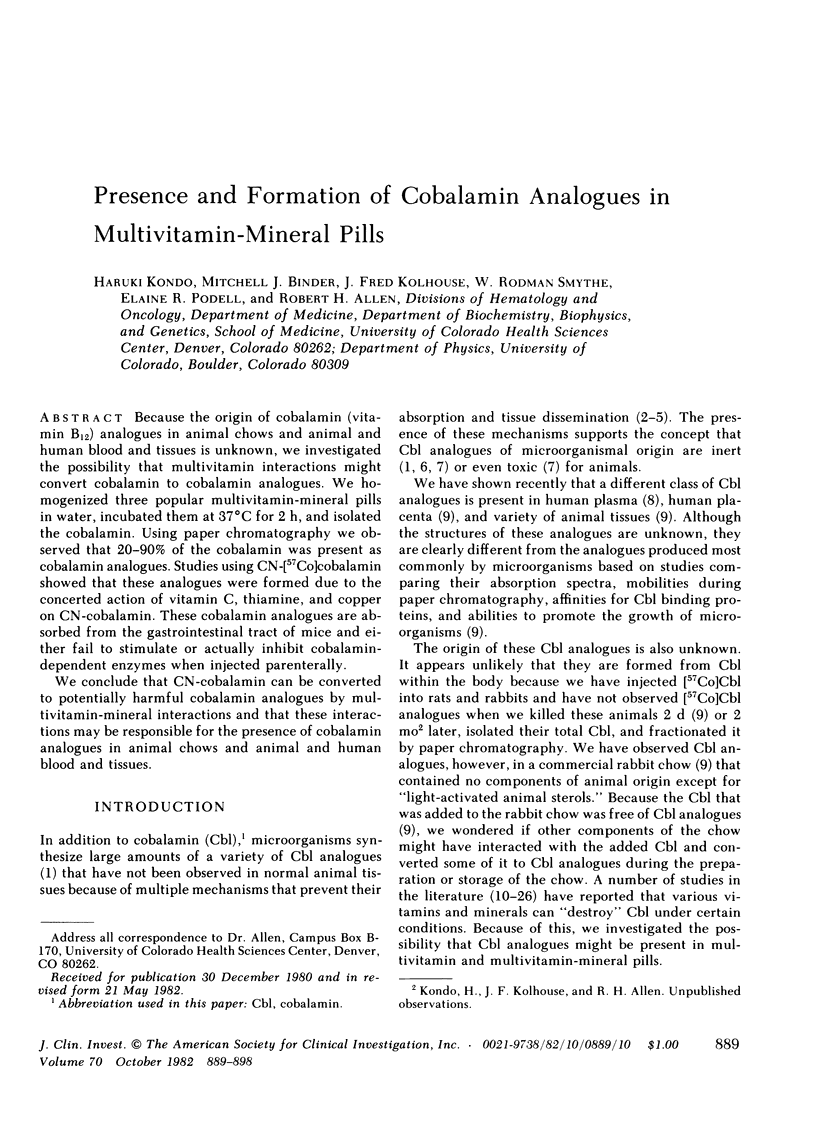
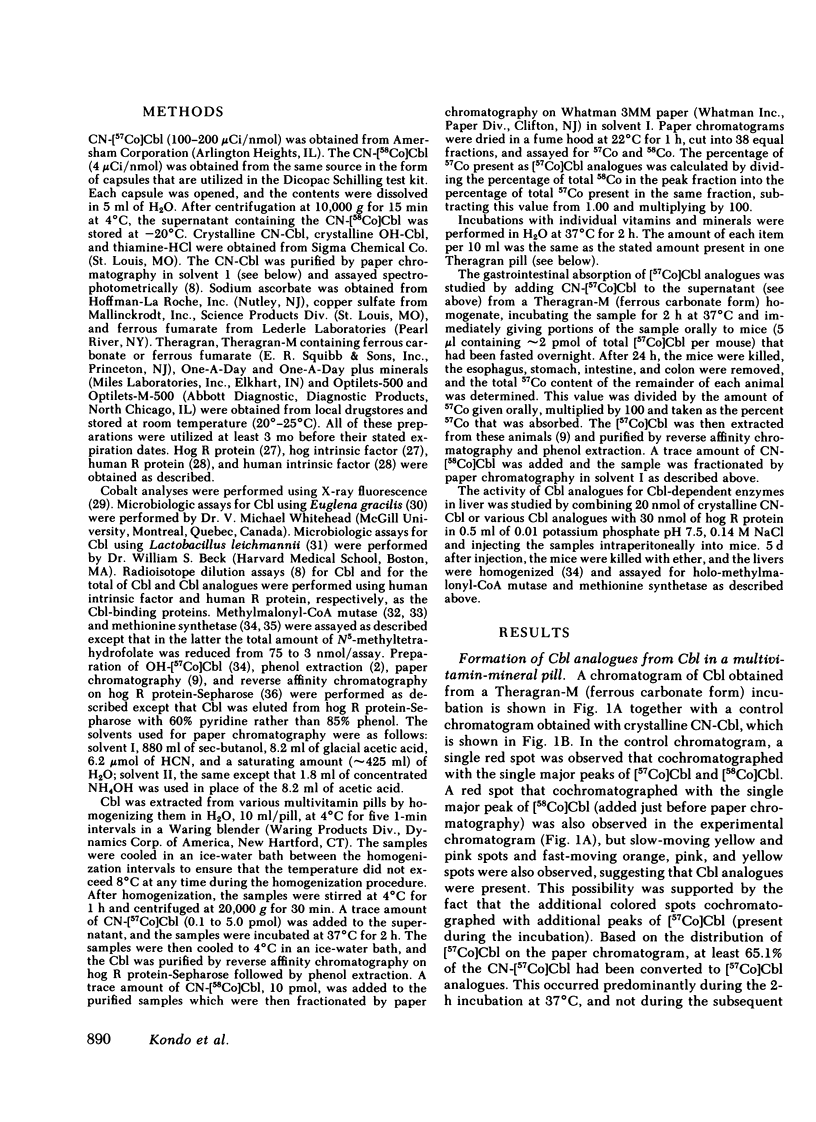
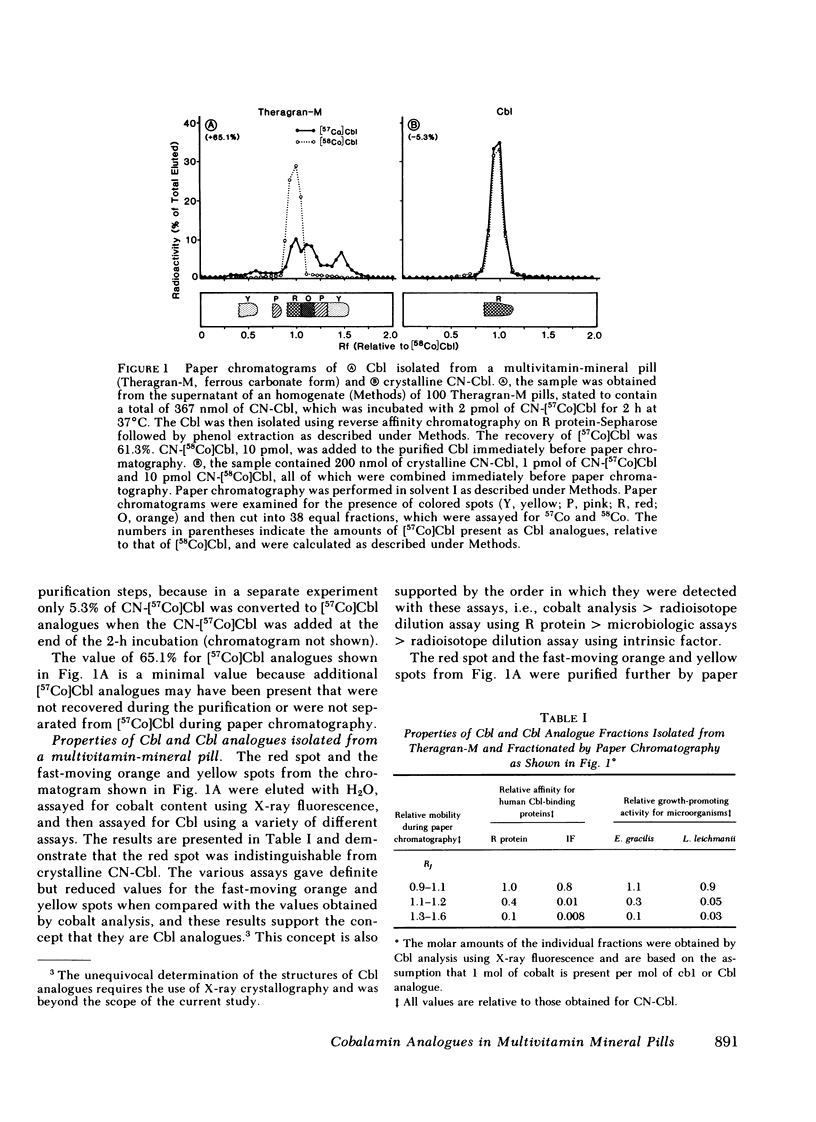
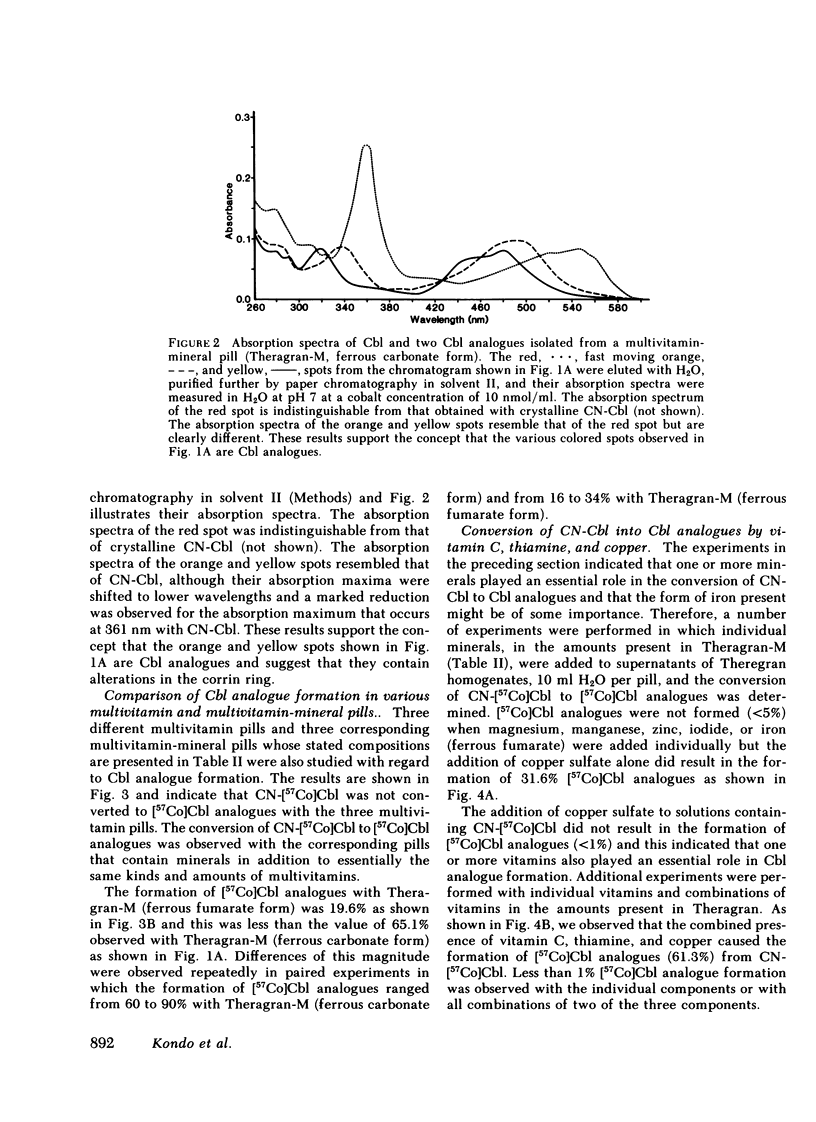
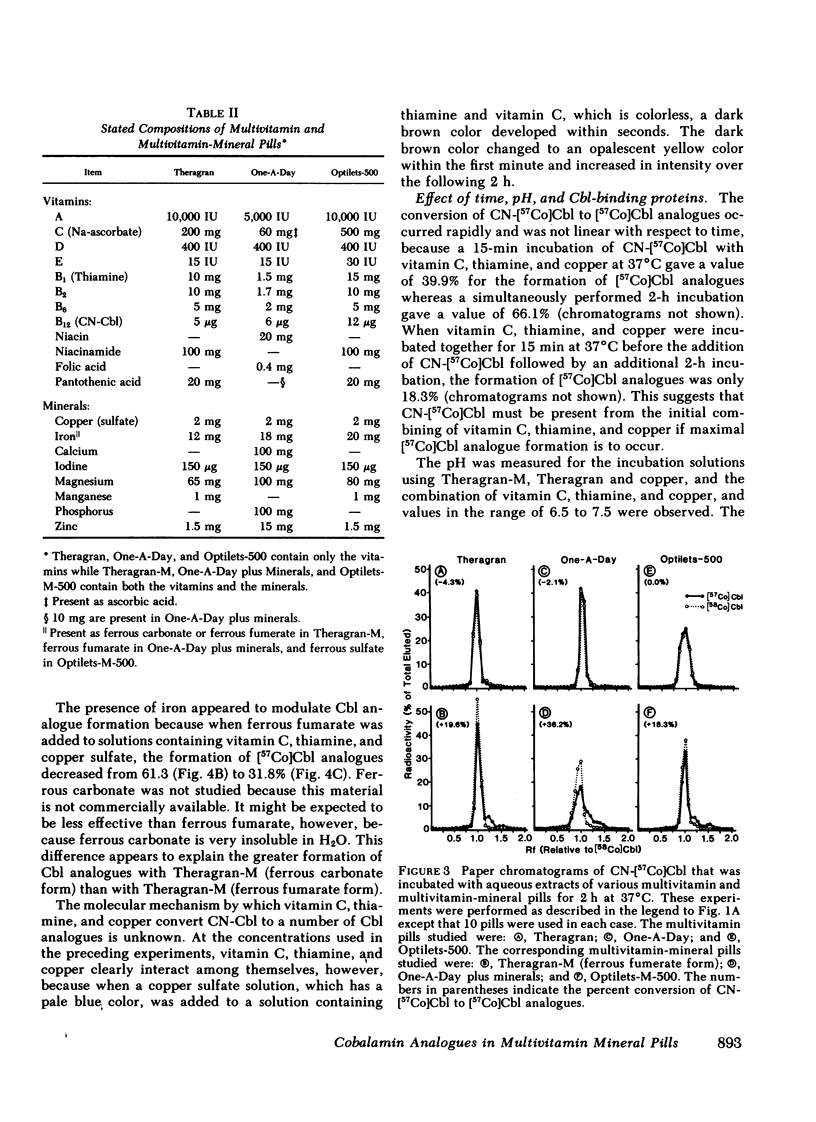
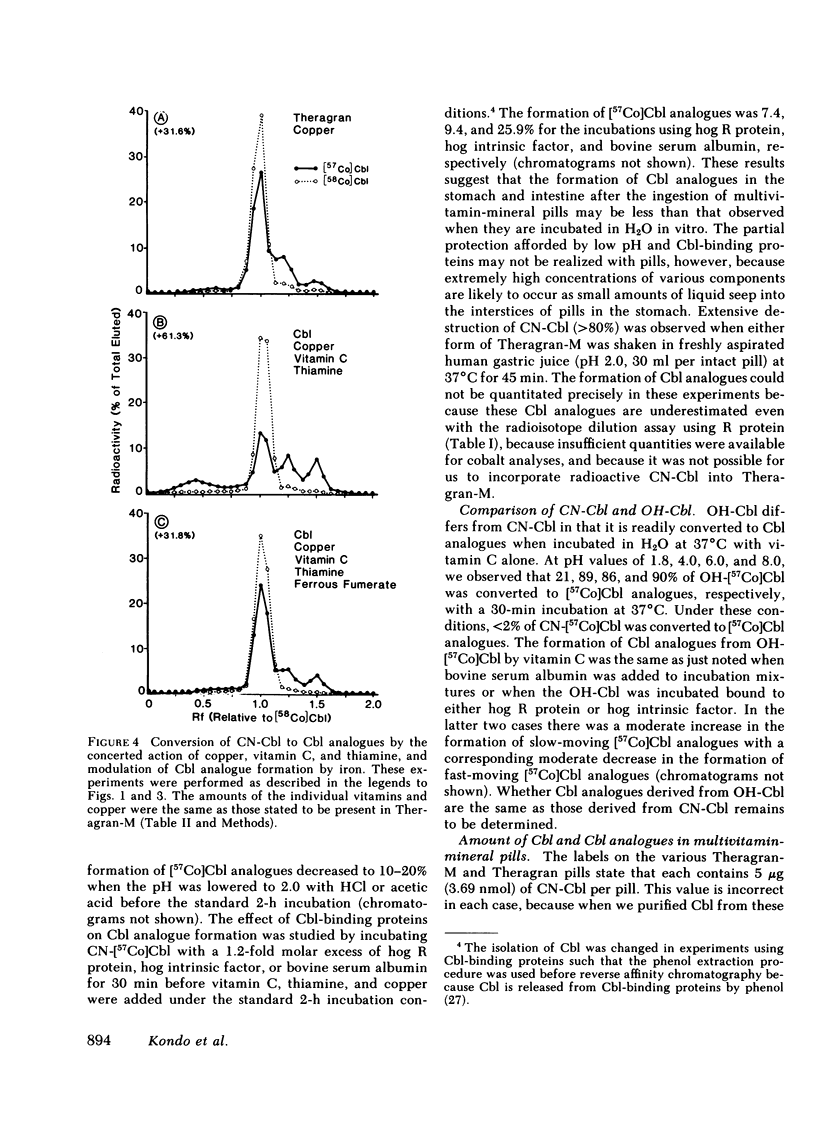

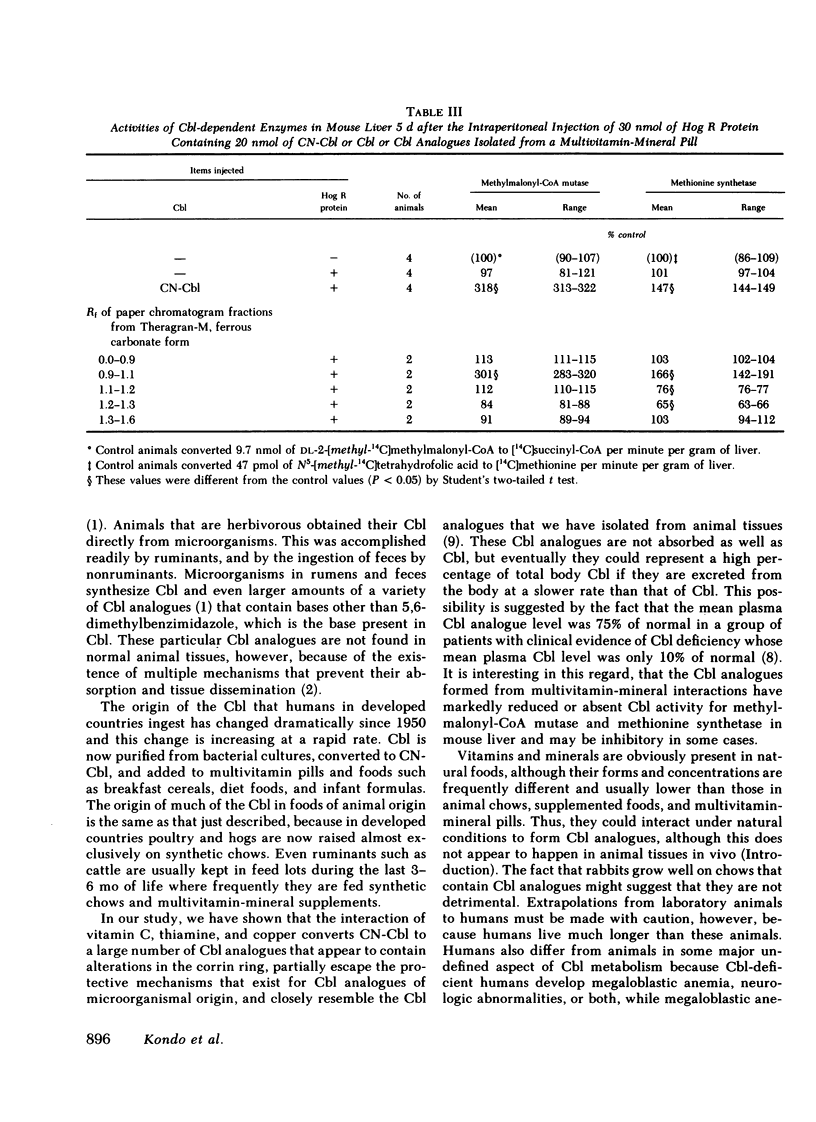
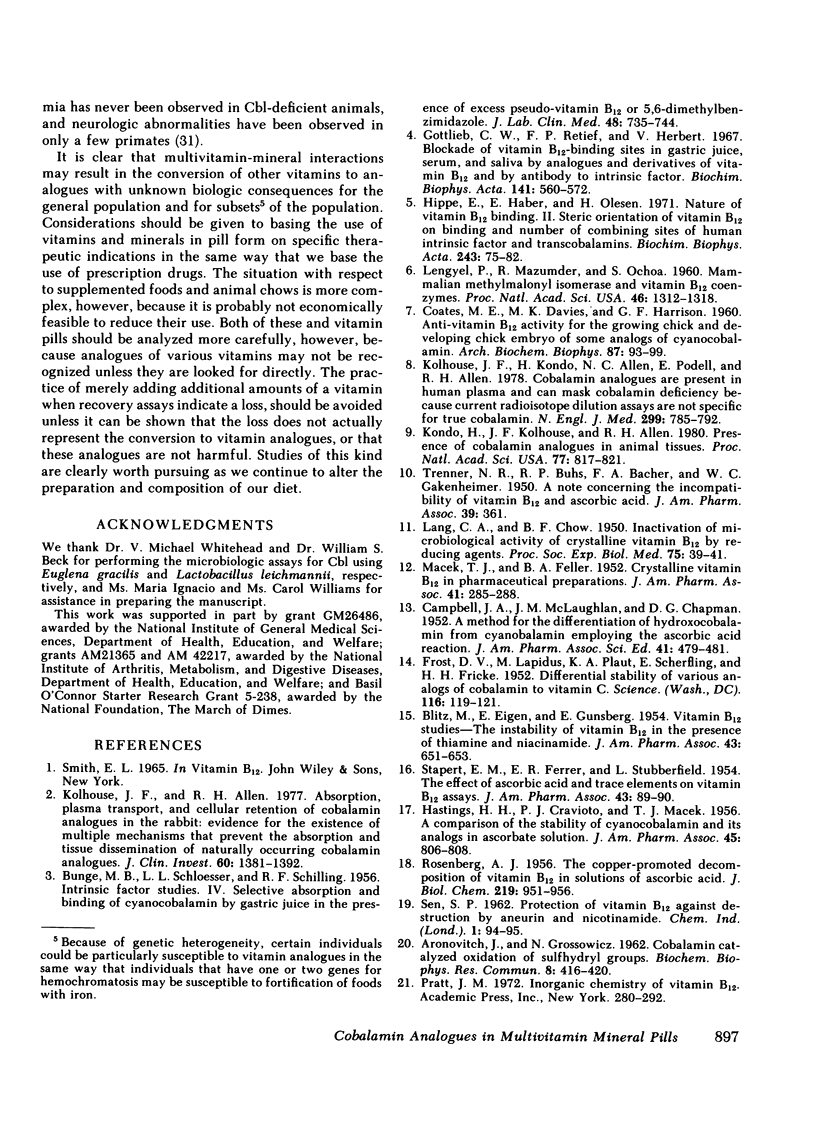
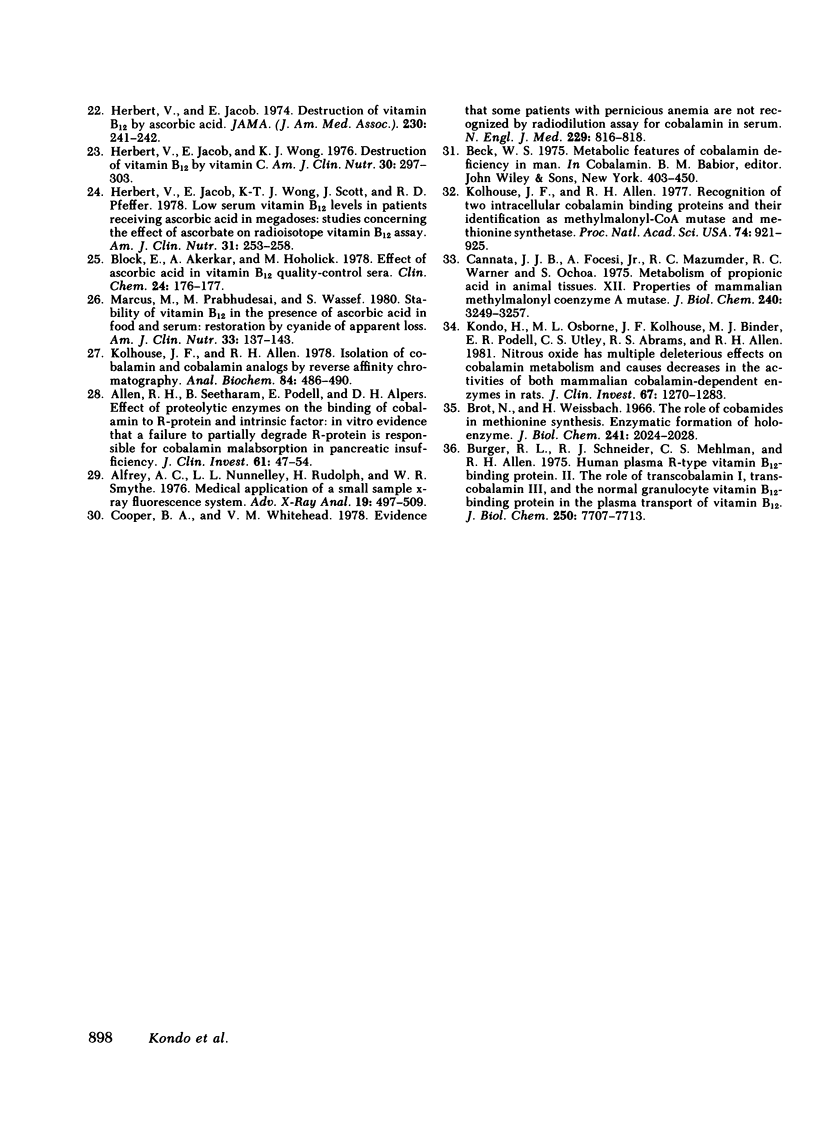
Selected References
These references are in PubMed. This may not be the complete list of references from this article.
- ARONOVITCH J., GROSSOWICZ N. Cobalamin catalyzed oxidation of sulfhydryl groups. Biochem Biophys Res Commun. 1962 Aug 31;8:416–420. doi: 10.1016/0006-291x(62)90288-7. [DOI] [PubMed] [Google Scholar]
- BLITZ M., EIGEN E., GUNSBERG E. Vitamin B12 studies; the instability of vitamin B12 in the presence of thiamine and niacinamide. J Am Pharm Assoc Am Pharm Assoc. 1954 Nov;43(11):651–653. doi: 10.1002/jps.3030431105. [DOI] [PubMed] [Google Scholar]
- Block E., Akerkar A., Hoholick M. Effect of ascorbic acid in vitamin B12 quality-control sera. Clin Chem. 1978 Jan;24(1):176–177. [PubMed] [Google Scholar]
- Brot N., Weissbach H. The role of cobamides in methionine synthesis. Enzymatic formation of holoenzyme. J Biol Chem. 1966 May 10;241(9):2024–2028. [PubMed] [Google Scholar]
- Burger R. L., Schneider R. J., Mehlman C. S., Allen R. H. Human plasma R-type vitamin B12-binding proteins. II. The role of transcobalamin I, transcobalamin III, and the normal granulocyte vitamin B12-binding protein in the plasma transport of vitamin B12. J Biol Chem. 1975 Oct 10;250(19):7707–7713. [PubMed] [Google Scholar]
- CAMPBELL J. A., MCLAUGHLAN J. M., CHAPMAN D. G. A method for the differentiation of hydroxocobalamin from cyanocobalamin employing the ascorbic acid reaction. J Am Pharm Assoc Am Pharm Assoc. 1952 Sep;41(9):479–481. doi: 10.1002/jps.3030410907. [DOI] [PubMed] [Google Scholar]
- CANNATA J. J., FOCESI A., Jr, MAZUMDER R., WARNER R. C., OCHOA S. METABOLISM OF PROPIONIC ACID IN ANIMAL TISSUES. XII. PROPERTIES OF MAMMALIAN METHYLMALONYL COENZYME A MUTASE. J Biol Chem. 1965 Aug;240:3249–3257. [PubMed] [Google Scholar]
- COATES M. E., DAVIES M. K., HARRISON G. F. Antivitamin B12 activity for the growing chick and developing chick embryo of some analogs of cyanocobalamin. Arch Biochem Biophys. 1960 Mar;87:93–99. doi: 10.1016/0003-9861(60)90128-4. [DOI] [PubMed] [Google Scholar]
- CRAVIOTO P. J., HUTCHINS H. H., MACEK T. J. A comparison of the stability of cyanocobalamin and its analogs in ascorbate solution. J Am Pharm Assoc Am Pharm Assoc. 1956 Dec;45(12):806–808. doi: 10.1002/jps.3030451211. [DOI] [PubMed] [Google Scholar]
- Cooper B. A., Whitehead V. M. Evidence that some patients with pernicious anemia are not recognized by radiodilution assay for cobalamin in serum. N Engl J Med. 1978 Oct 12;299(15):816–818. doi: 10.1056/NEJM197810122991506. [DOI] [PubMed] [Google Scholar]
- FROST D. V., LAPIDUS M., PLAUT K. A., SCHERFLING E., FRICKE H. H. Differential stability of various analogs of cobalamin to vitamin C. Science. 1952 Aug 1;116(3005):119–121. doi: 10.1126/science.116.3005.119. [DOI] [PubMed] [Google Scholar]
- Gottlieb C. W., Retief F. P., Herbert V. Blockade of vitamin B12-binding sites in gastric juice, serum and saliva by analogues and derivatives of vitamin B12 and by antibody to intrinsic factor. Biochim Biophys Acta. 1967 Aug 29;141(3):560–572. doi: 10.1016/0304-4165(67)90185-7. [DOI] [PubMed] [Google Scholar]
- Herbert V., Jacob E. Destruction of vitamin B12 by ascorbic acid. JAMA. 1974 Oct 14;230(2):241–242. [PubMed] [Google Scholar]
- Herbert V., Jacob E., Wong K. T. Destruction of vitamin B12 by vitamin C. Am J Clin Nutr. 1977 Mar;30(3):297–299. doi: 10.1093/ajcn/30.3.297. [DOI] [PubMed] [Google Scholar]
- Herbert V., Jacob E., Wong K. T., Scott J., Pfeffer R. D. Low serum vitamin B12 levels in patients receiving ascorbic acid in megadoses: studies concerning the effect of ascorbate on radioisotope vitamin B12 assay. Am J Clin Nutr. 1978 Feb;31(2):253–258. doi: 10.1093/ajcn/31.2.253. [DOI] [PubMed] [Google Scholar]
- Hippe E., Haber E., Olesen H. Nature of vitamin B 12 binding. II. Steric orientation of vitamin B 12 on binding and number of combining sites of human intrinsic factor and the transcobalamins. Biochim Biophys Acta. 1971 Jul 25;243(1):75–82. [PubMed] [Google Scholar]
- Kolhouse J. F., Allen R. H. Absorption, plasma transport, and cellular retention of cobalamin analogues in the rabbit. Evidence for the existence of multiple mechanisms that prevent the absorption and tissue dissemination of naturally occurring cobalamin analogues. J Clin Invest. 1977 Dec;60(6):1381–1392. doi: 10.1172/JCI108899. [DOI] [PMC free article] [PubMed] [Google Scholar]
- Kolhouse J. F., Allen R. H. Isolation of cobalamin and cobalamin analogs by reverse affinity chromatography. Anal Biochem. 1978 Feb;84(2):486–490. doi: 10.1016/0003-2697(78)90067-2. [DOI] [PubMed] [Google Scholar]
- Kolhouse J. F., Allen R. H. Recognition of two intracellular cobalamin binding proteins and their identification as methylmalonyl-CoA mutase and methionine synthetase. Proc Natl Acad Sci U S A. 1977 Mar;74(3):921–925. doi: 10.1073/pnas.74.3.921. [DOI] [PMC free article] [PubMed] [Google Scholar]
- Kolhouse J. F., Kondo H., Allen N. C., Podell E., Allen R. H. Cobalamin analogues are present in human plasma and can mask cobalamin deficiency because current radioisotope dilution assays are not specific for true cobalamin. N Engl J Med. 1978 Oct 12;299(15):785–792. doi: 10.1056/NEJM197810122991501. [DOI] [PubMed] [Google Scholar]
- Kondo H., Kolhouse J. F., Allen R. H. Presence of cobalamin analogues in animal tissues. Proc Natl Acad Sci U S A. 1980 Feb;77(2):817–821. doi: 10.1073/pnas.77.2.817. [DOI] [PMC free article] [PubMed] [Google Scholar]
- Kondo H., Osborne M. L., Kolhouse J. F., Binder M. J., Podell E. R., Utley C. S., Abrams R. S., Allen R. H. Nitrous oxide has multiple deleterious effects on cobalamin metabolism and causes decreases in activities of both mammalian cobalamin-dependent enzymes in rats. J Clin Invest. 1981 May;67(5):1270–1283. doi: 10.1172/JCI110155. [DOI] [PMC free article] [PubMed] [Google Scholar]
- LANG C. A., CHOW B. F. Inactivation of microbiological activity of crystalline vitamin B12 by reducing agents. Proc Soc Exp Biol Med. 1950 Oct;75(1):39–41. doi: 10.3181/00379727-75-18092. [DOI] [PubMed] [Google Scholar]
- Lengyel P., Mazumder R., Ochoa S. MAMMALIAN METHYLMALONYL ISOMERASE AND VITAMIN B(12) COENZYMES. Proc Natl Acad Sci U S A. 1960 Oct;46(10):1312–1318. doi: 10.1073/pnas.46.10.1312. [DOI] [PMC free article] [PubMed] [Google Scholar]
- MACEK T. J., FELLER B. A. Crystalline vitamin B12 in pharmaceutical preparations. J Am Pharm Assoc Am Pharm Assoc. 1952 Jun;41(6):285–288. doi: 10.1002/jps.3030410602. [DOI] [PubMed] [Google Scholar]
- Marcus M., Prabhudesai M., Wassef S. Stability of vitamin B12 in the presence of ascorbic acid in food and serum: restoration by cyanide of apparent loss. Am J Clin Nutr. 1980 Jan;33(1):137–143. doi: 10.1093/ajcn/33.1.137. [DOI] [PubMed] [Google Scholar]
- ROSENBERG A. J. The copper-promoted decomposition of vitamin B12 in solutions of ascorbic acid. J Biol Chem. 1956 Apr;219(2):951–956. [PubMed] [Google Scholar]
- STAPERT E. M., FERRER E. B., STUBBERFIELD L. The effect of ascorbic acid and trace elements on vitamin B12 assays. J Am Pharm Assoc Am Pharm Assoc. 1954 Feb;43(2):87–90. doi: 10.1002/jps.3030430205. [DOI] [PubMed] [Google Scholar]
- TRENNER N. R., BUHS R. P., BACHER F. A., GAKENHEIMER W. C. A note concerning the incompatibility of vitamin B12 and ascorbic acid. J Am Pharm Assoc Am Pharm Assoc. 1950 Jun;39(6):361–361. doi: 10.1002/jps.3030390619. [DOI] [PubMed] [Google Scholar]


